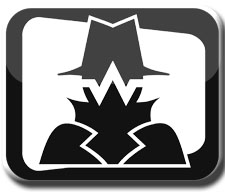Search Articles
Product Series Filter
Articles

Minimizing RF Problems When Using Digital Wireless Audio
Minimizing RF interference is essential to achieve the best wireless audio possible. Several common issues which result in dropouts and short range include: Interference from other RF sources (RFI). This includes DTV broadcast television, gigantic video walls, and RF video links. RF video systems can be the source of interference, even though most of these […]
Read The Full Article
Picking the Right Antenna for Digital Wireless Audio
Antennas are critical components of a wireless system. In many ways, they perform like microphones with receivers, and loudspeakers with transmitters. Just like with microphones and loudspeakers, there is no single antenna suitable for all applications. A strong, predictable RF performance requires the use of the right antenna. ¼ Wave Whip ¼ wave whip antennas […]
Read The Full Article
Why Digital Wireless?
Wireless systems are designed to replace signal cables. While cables are simple and reliable, many times going ‘hardline’ is impractical or impossible. A wireless system, such as the A10 Digital Wireless System, that sounds and performs as much like a cable as possible is the next best thing. Wireless systems can be digital or analog. […]
Read The Full Article
How is a 32-bit float file recorded?
The MixPre II Series are the industry’s first and only USB audio interfaces to offer 32-bit floating point audio for MacOS Catalina and Windows 10.¹ Audio inputs on the MixPre appear as 32-bit floating point audio sources to a DAW for recording and mixing. DAW software can output 32-bit floating point audio back to the […]
Read The Full Article
Installing Wave Agent on Mac OS Catalina, Big Sur, Monterey, and Macs with Apple Silicon
Step 1 Uninstall any previous version of Wave Agent. Download Wave Agent for macOS here. After downloading, open Finder and locate WaveAgent_Mac_v1.20.Expand the folder as shown below. Open the file wave-agent-macos-1.20.dmg Opening the file will generate a removable drive icon on the desktop and/or finder. Step 2 Open the removable drive icon. Select and right-click […]
Read The Full Article
CL-16 FAQ
How does the CL-16 connect to the 833, 888, and Scorpio? The CL-16 connects via a standard USB-B to USB-A cable to the 8-Series Mixer-Recorder. Headphone audio connects via any of the 8-Series headphone jacks to the CL-16’s ¼” headphone jack. Connectivity of the 8-Series is expanded via the CL-16’s built in 5-port USB hub: […]
Read The Full Article